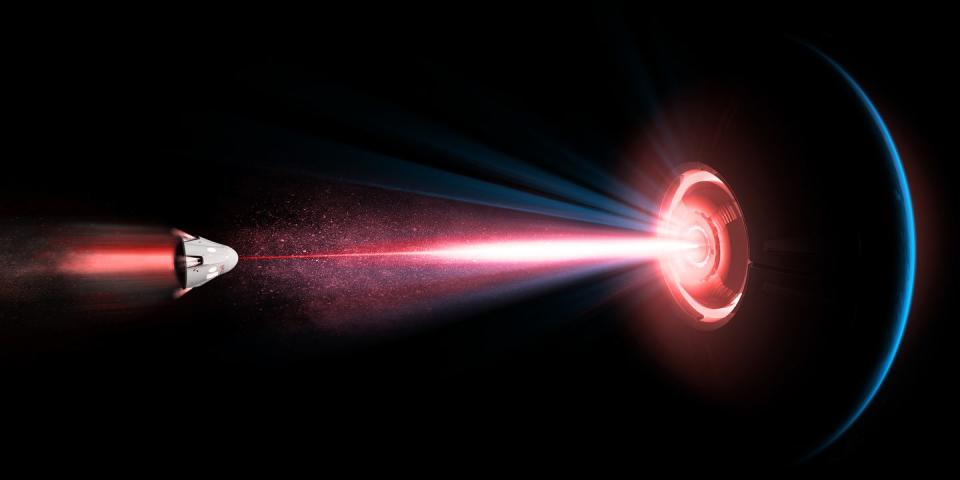Scientists Are Actively Building a Real-Life Tractor Beam. Seriously.

Scientists are working on bringing a tractor beam from science fiction to reality.
The researchers are planning to use beams of electrons to create opposite charges and attract object to the beam for manipulation.
The goal is to find a safe and effective way to pare down the ever-growing field of space junk orbiting our planet.
If you’re familiar with any amount of sci-fi, you’ve probably been made aware of the tractor beam. Often used in fiction to grab rogue objects or opposing spaceships and move them around, they usually consist of a nondescript beam of light shooting out from a craft to envelop something and hold it in place.
Insert a hand-wavey explanation of the “science” behind the future-tech here.
But that explanation may soon be less hand-wavey, and the tech may be less future. Because a real-life tractor beam is currently under development at the University of Colorado Boulder, with the goal of eventually helping to clean up space junk.
Space debris is a serious issue, and it’s becoming more serious by the day as we continue to launch objects into space. “The problem with space debris is that once you have a collision, you're creating even more space debris,” Julian Hammerl, a Ph.D. student working on the project, said in a press release. “You have an increased likelihood of causing another collision, which will create even more debris. There’s a cascade effect.”
The problem with space debris, though, is that it’s very hard to collect and remove for proper disposal. You can’t just send a little robot up into space to scoop up our refuse and send it back down—because you can’t really just grab space junk. It’s most often moving very fast, and it’s very hard to predict exactly how it’s moving so you can be ready to catch it. There’s unfortunately a good chance that whatever you send to physically grab the junk is going to get hit and become even more junk itself.
So, enter the tractor beam. If you can just shoot a beam at something to grab it, most of that danger gets avoided. The team working on this technology is looking to create an “electron beam,” which would basically work like a very strong version of static electricity.
“We’re creating an attractive or repulsive electrostatic force,” Hanspeter Schaub, a researcher and leader of this project, said in a news release. “It’s similar to the tractor beam you see in Star Trek, although not nearly as powerful.”
In order to test its tech, the team has been working with a device called Electrostatic Charging Laboratory for Interactions between Plasma and Spacecraft (ECLIPS). It’s basically a small chamber that mimics, in miniature, the regions of space around our planet that is most full of space debris.
In that chamber, they can put their idea to work by shooting small blocks representing space debris with beams of electrons. This makes the debris slightly negatively charged and the tractor beam slightly positively charged. And as opposite charged attract, the tractor beam can begin its towing work. The team estimates that it could pull a several-ton satellite around 200 miles over two to three months—not fast, but it would be fast enough.
But even if they could easily scale up their tech, the researchers face a lot of problems bringing this from sci-fi concept to reality. Namely, that the environment around Earth is filled with inconsistent ribbons of solar wind—streams of high-energy particles put out by the Sun. Because the region of space with all the junk in it is outside of the magnetic field shielding the surface of our planet from these particles, they can mess with the effectiveness of the beam.
“That’s what makes this technology so challenging,” Kaylee Champion, another Ph.D. student working on the project, said in a press release. “You have completely different plasma environments in low-Earth orbit, versus geosynchronous orbit versus around the moon. You have to deal with that.”
So, we still have quite a way to go before science fiction truly becomes reality, but it’s closer than we may have thought. Tractor beam, engage.
You Might Also Like

 Yahoo Sports
Yahoo Sports 